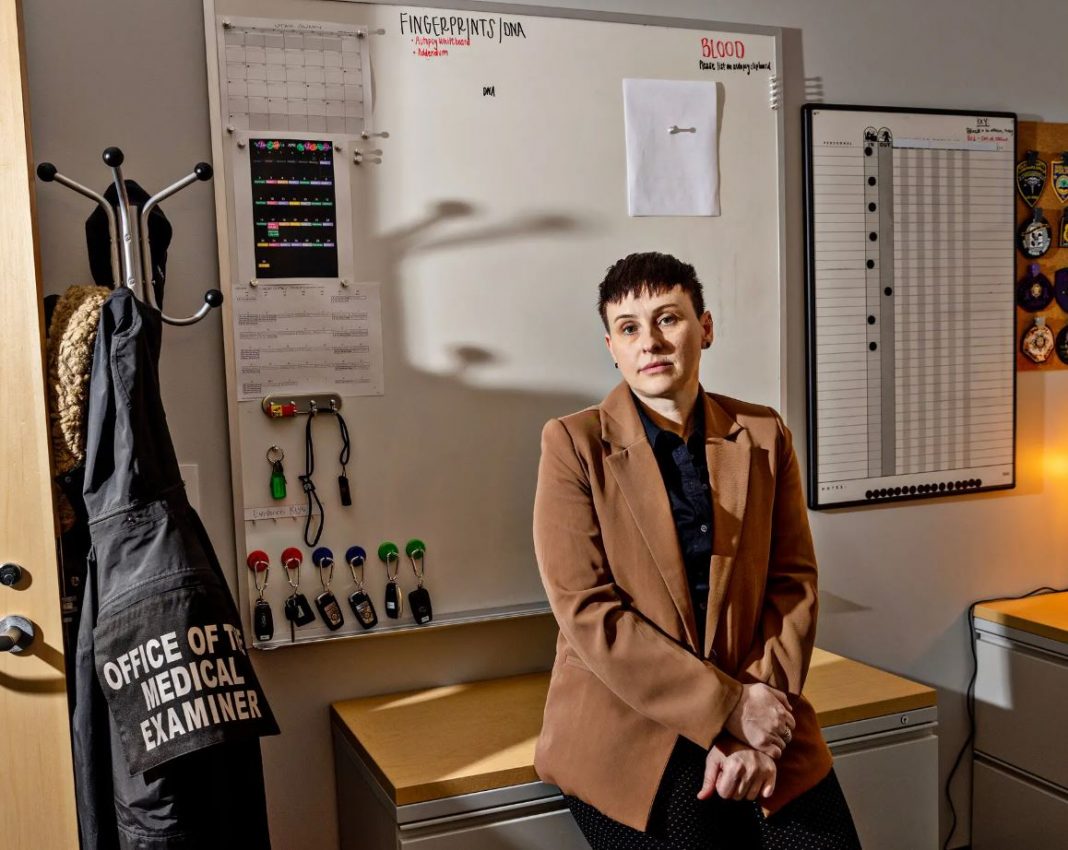As Utah’s top death investigator, Cory Russo is used to questioning total strangers at their most vulnerable. Her profession entails interviewing survivors of suicides, homicides, and other sudden deaths to learn more about the deceased’s life.
She thought back to the recent suicide of a young guy who had been living with an elderly couple. The guy had been staying with them for a year, Ms. Russo discovered through her interviews, ever since his family had forced him out of their home due to his homosexuality. He has battled with mental instability and substance abuse.
No one knows how many homosexual and transgender persons kill themselves each year in the United States since most death investigations do not gather data on sexuality or gender identity. Researchers have noted that a lack of data makes it difficult to assess the efficacy of suicide prevention programmes and to target them to those most at risk.
They lamented that the lack of information was particularly problematic given how often unfounded notions about L.G.B.T.Q. suicide rates are brought up in highly charged political conversations. For instance, although some Republican politicians have stated that fatalities by suicide are uncommon, other L.G.B.T.Q. campaigners have cautioned that limitations on gender-affirming treatment for transgender youth may lead to increased suicides.
Months after detectives like Ms. Russo arrive at the site of a death, Dr. Staley’s team of six people performs “psychological autopsies,” contacting family members of every person in the state who dies by suicide or drug overdose to get extensive information on the lives of the departed.
Dr. Staley argues that data on sexual orientation and gender, as well as housing, mental health, drug issues, and social media usage, may shed light on the myriad of variables that lead some individuals to make the choice to take their own life. Later this year, he will produce a report detailing his conversations with the loved ones of Utah residents who committed suicide during the last five years.
When investigating the causes of suicide in children and adolescents, the team not only speaks with parents and guardians, but also with various friends. Dr. Staley reflected that in some instances, acquaintances knew about the deceased’s difficulties with sexuality, gender, or drug usage, but the parents were unaware.
These kind of discussions may be really challenging. John Blosnich, director of the L.G.B.T. Mortality Project at the University of Southern California, has participated in ride-alongs with death investigators to monitor their work and educate them on the significance of gathering data on gender and sexuality. His experience also aids investigators in dealing with the emotional and stigmatising inquiries asked by the deceased’s loved ones.
Dr. Blosnich has trained investigators in Utah, Nevada, Colorado, New York, and California, all of which will begin collecting data on sexual orientation and gender identity under a pilot programme mandated by state law in 2021. According to Dr. Blosnich’s survey of 114 investigators in three states, only around 41% had explicitly inquired about a dead person’s sexual orientation and just 25% had asked about gender identity before receiving the training.
Toxicology results, mental health diagnoses, and personal accounts of financial and familial hardships are just some of the pieces of information that make up the CDC’s database of violent deaths, which is populated with information from medical examiner reports on homicides and suicides.
The Office of the National Coordinator for Health Information Technology is working to establish new guidelines that will force all federally funded hospitals to inquire about patients’ sexual orientation and gender identity.
Aaccording to Dr. John Auerbach, who worked on standardising questions on sexuality and gender at the C.D.C. in 2021 and 2022. In addition to answering concerns like the relative risk of cancer or diabetes in the L.G.B.T.Q. population, Dr. Auerbach believes that frequently talking to patients about sexuality and gender identity might help address other public health problems.
However, such strategy has its limitations. Patients may not feel safe telling their physicians about their sexual history. Suicide rates may be higher among persons who don’t use medical services.
Dr. Staley emphasised the need of considering the gaps in knowledge. A high prevalence of suicidal ideation and attempted suicide among lesbian, gay, and transgender persons has been recorded, however this does not always translate into a high suicide rate. He pointed out that although women make more suicide attempts than men, males really end up killing themselves at a considerably greater rate.

